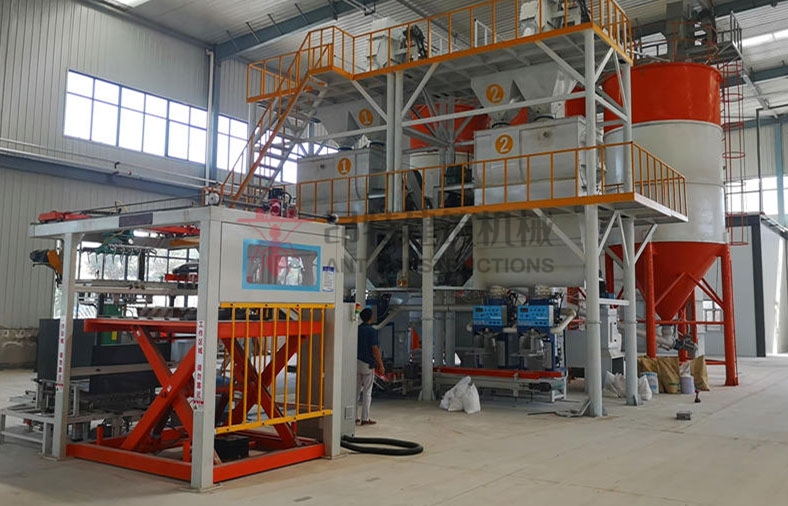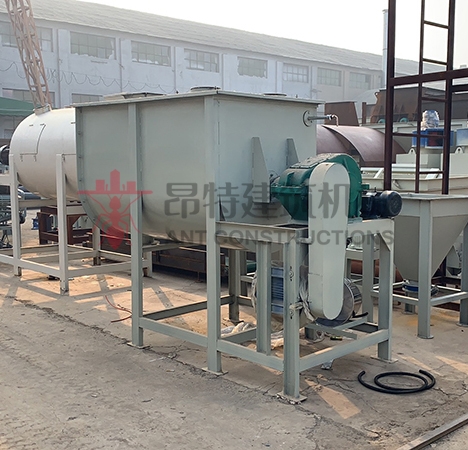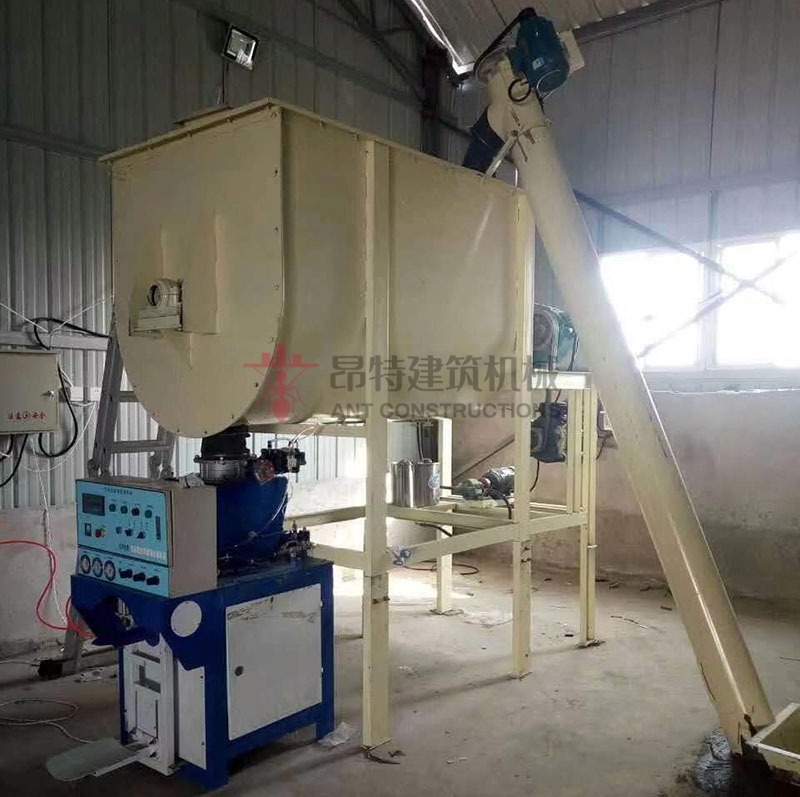How to produce thermoplastic road marking paint
Author:ANT CONSTRUCTIONS Comefrom: Createdate:2021/4/16 14:55:30 Hits:2470
How to produce thermoplastic road marking paint
What is traffic road line marking thermoplastic paint?
Thermoplastic road marking paint, also called hot melt marking paint, is a kind of powder paint. When applied as road surface markings, a hot melt kettle is used to heat it to 200 °C (392 °F) to melt the powder, after which it is sprayed on the road surface. The coating then becomes a hard, polymer line after cooling. This paint is a thick coating as is wear-resisting, bright and reflective. In recent years, practical applications tests have proved that the marking lines lack surface roughness and can easily cause wheel slip, resulting in a traffic accident in snow and rainy weather. Therefore, some countries once restricted the use of this paint. In order to increase the antiskid performance of the line, thermoplastic paint has added reflective glass beads. Thermoplastic can be used very effectively for large Anti-skid areas on roads and pedestrian walkways by adding glass beads. It can be produced in any colour and is great for car parks, factory walkways and many other areas. It's fast drying and can be driven over after just a few minutes.

How to produce thermoplastic road marking paint with a simple method?




Road marking thermalplastic paint mainly include resin, titanium dioxide, liquid dioctyl ester, silica sand, calcium powder, glass beads, etc.
First choose the special road marking thermalplastic paint mixer equipment for the production of hot-melt thermalplastic marking paint. Since the hot-melt thermalplastic marking paint is a mixture of dry powder and a small amount of liquid, the stirring resistance of the hot-melt marking paint is large, and you must choose a special mixer for the melting road marking thermalplastic paint.The production process of road marking thermalplastic paint is basically a physical mixing process. However, it is not a simple mixing process of various ingredients because you need to ensure the uniform mixing of various raw materials and the state of tiny core-coated powder with resin or glass beads as the core. Around the core is the adhesive layer of additives and pigments, and the outer layer is the adhesive and dispersion layer of fillers. Note: add qualified raw materials according to the product formula and recommended dosage, if too much adding of some materials, it is easy to cause yellowing.
Because the proportion of color pigments and additives in the road marking thermalplastic paint is small, to ensure the uniformity of the road marking paint quality, the mixing uniformity of these two components must be ensured, so in the production process should be firstly add the resin to the machine and coloring pigments to make it evenly mixed, and during the whole production process, appropriate amount of high-efficiency fluorescent whitening agent should be mixed evenly. Generally, adding about 200g per ton road makring paint, but, because of the different production formulas, personal adjustment is required. It must be a gradual spraying method.
the whole process is as follows:
1, Prepare raw materials as formula.
Except the large-scale fully automatic Thermoplastic marking paint production line which automatically measures and distributes the proportions, the small prodution uses manual batching of raw materials proportion and puts the proportioned raw materials into the mixer manually for mixed production. The Thermoplastic marking paint mixer can mix powder materials and liquid materials.
2, Materials feeding.
The equipment equipped with a screw feeder directly which lifting the materials from ground to mixer. There are two feeding methods, one is to use a bucket elevator for vertical feeding, and the average feeding speed is 7 kg/s (tested with 200 mesh materials); the other is to use screw conveyor feeding inclinedly,this feeding equipment is low cost, easy production and equipment maintenance.
3, Mixing.
The mixing work is finished by thermoplastic paint mixer. Thermoplastic paint mixer is normally use single shaft ribbon bype mixer, mixing cycle time is about 20-30 minutes.
4, Packaging.
If the mixer equipped with a finished product silo, the air-flow valve port automatic packaging machine is connected to the finished product silo. After the material all discharged from the finished product silo, materials will be released to the packaging machine and the work only need one button operation to finish packing. If the equipment doesn't have a finished product silo, the valve port packaging machine is directly linked with the mixer discharge port for packaging. This packaging method is fast, time-saving and labor-saving.
Road marking construction schedule and method
First, the construction schedule
Under normal circumstances, the construction of the main line can complete 800-1000 m2 of marking line per day, the guiding line can be completed 400-600 m2 per day, and the guiding arrow can complete 60m2 per day.
Second, the construction method
The marking line construction personnel are divided into three groups, namely the road cleaning and discharging line group, the paint melting and stirring group and the marking line coating group. The construction temperature is generally between 100 ° C and 30 ° C. When the ambient temperature is lower than 100 ° C, it is resolutely not applied. The road surface must be dry and free of dust during construction.
1. Road cleaning and discharging line group:
Firstly, use the hand-push road cleaning machine to remove the road area soil, floating dust and obstacles, dust, asphalt, oil or other harmful substances, and mark the wire as required. There are many ways to mark the wire, one is to use the rope ash line (that is, the elastic package). This method has a fast and simple schedule, but it has high technical requirements for the marking line personnel, and it is easy to produce deviations due to the experience of the straight line of the wire, and the gray line is easy to fall off; another kind of steel nail pulls the lead to ensure a better wire. Qu, straight, but the progress is slightly slower. For the various arrows and characters, the above two methods are generally used, and for the lane edge line and the boundary line, the marking line can be used for the lofting and arranging. During construction, we will use it flexibly according to the experience. In the second step, a primer is applied to one side of the wire with a primer. The spraying method is better, the primer width is uniform, the paint film is uniform, and the adhesion is also good. When using the brush by hand, it is necessary to master the amount of paint used moderately, evenly, not leaking or lace. Dry after coating for 5 to 10 minutes, press it with your fingers and lift it into a wire shape. At this time, it can be regarded as the road surface finish.
2. Coating melting and mixing group:
The coating (auxiliary) is put into the hot-melting kettle, and the temperature in the kettle is controlled between 180 °C and 210 °C. While melting and stirring, the temperature is strictly controlled. After melting and dispersing, in order to ensure better quality of the marking, the inspection test is carried out. The test method is to take a little sample of the paint in the kettle and apply it into a sheet shape (about 1.6 mm thick) to make it cool naturally. After drying, bend it with a finger. When it is bent to about 35 degrees, the smear breaks best.
3. Marking line coating group:
When the hot melted melted paint is placed in the lined storage tank, it must be filtered with an iron screen. Ignite the fire under the bucket and on the side of the scribe to maintain the proper construction temperature. Then pour the glass beads into the box and the construction can begin. When scribing, the scribing car is coated with a wire, and the suitable temperature of the coating at the time of coating is approximately 180 °C.













